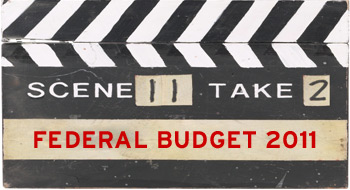
The lights were on and the cameras were rolling when Jim Flaherty tabled his 2011 Budget in March. But when the opposition parties called “Cut!” the Finance Minister vowed to repeat his performance in the second take.
With a majority government in place to back him up, Flaherty has now delivered a near identical budget. Among the familiar items in the budget, Flaherty drew attention to the one-time hiring credit for small business and an employment insurance break for about 525,000 small businesses.
Related story:
There are minor changes to the budget—scrapping the per-vote political party subsidy and paying Quebec $2.2 billion to implement an HST—but very little new that would affect plan sponsors, or personal financial planning.
Both measures were part of the Conservatives campaign platform during the April election campaign. Also on the campaign trail, the Conservatives promised to balance the budget within four years, a year sooner than targeted in the March budget.
The best news in the budget may be that the federal government’s finances are in better shape today than they were in March. Flaherty projects a budget deficit of $36.2 billion for fiscal year 2010-11, about $4.3 billion less than his March projection.
But the coming year will see the feds doling out for Quebec’s HST harmonization, while Ottawa’s holdings in General Motors are expected to drop about $1 billion in value. By the end of fiscal 2011-2012, the deficit will rise to $32.3 billion—$2.7 billion more than estimated in March.
Flaherty said the government was targeting 5% cuts to program costs, which he deemed “not very ambitious” by private sector standards. So far, there are no details on where these cuts will come from.
Highlights of today’s budget
- Total spending of $281.4 billion (includes $33 billion in debt payments), up 3.6% from 2010-11.
- Total debt of $585.4 billion, up $32.3 billion from 2010-11.
- Projected deficit of $32.3 billion, $2.7 billion higher than forecast in March.
- Projected deficit for 2010-11 of $36.2 billion, $4.3 billion better than forecast in March.
- Plans to balance the budget by 2015-16.
New measures
- $2.2 billion set aside for a deal with Quebec on sales-tax harmonization.
- Phasing out of the per-vote subsidy for political parties, making parties almost fully reliant on private donations.
Reintroduced measures from the March 22 budget
- A top-up benefit of up to $600 for single, low-income seniors and up to $840 for couples through the Guaranteed Income Supplement. Expected to cost more than $300 million a year.
- A Family Caregiver Tax Credit which would save about $300 a year for people caring for sick or disabled relatives.
- An initiative to attract healthcare workers to rural and remote communities by forgiving up to $40,000 in student loans for doctors and $20,000 for nurses.
- A temporary Hiring Credit for Small Business of up to $1,000 against the increase in 2011 EI premiums to encourage hiring.
For a recap of the measures introduced in March, read:
